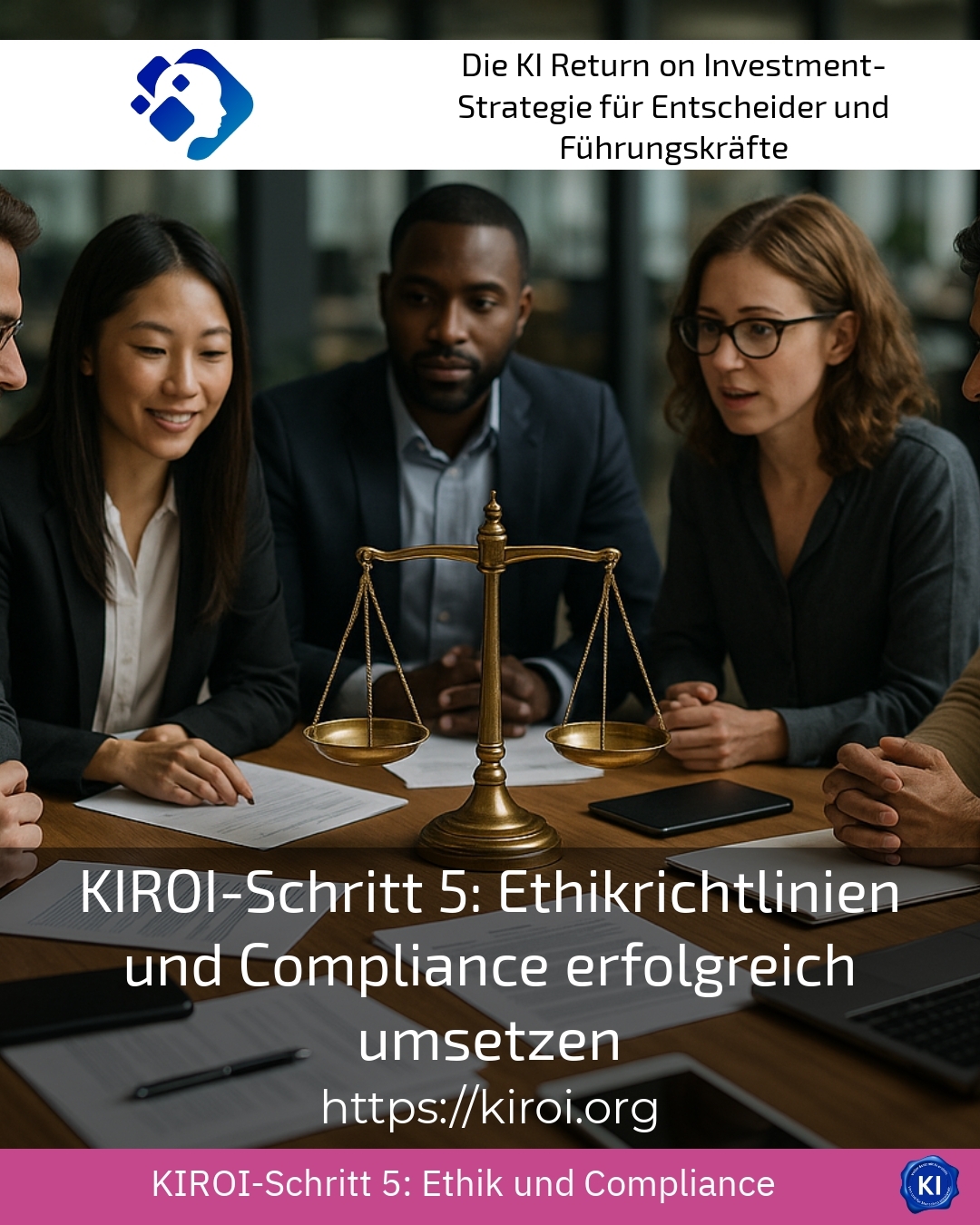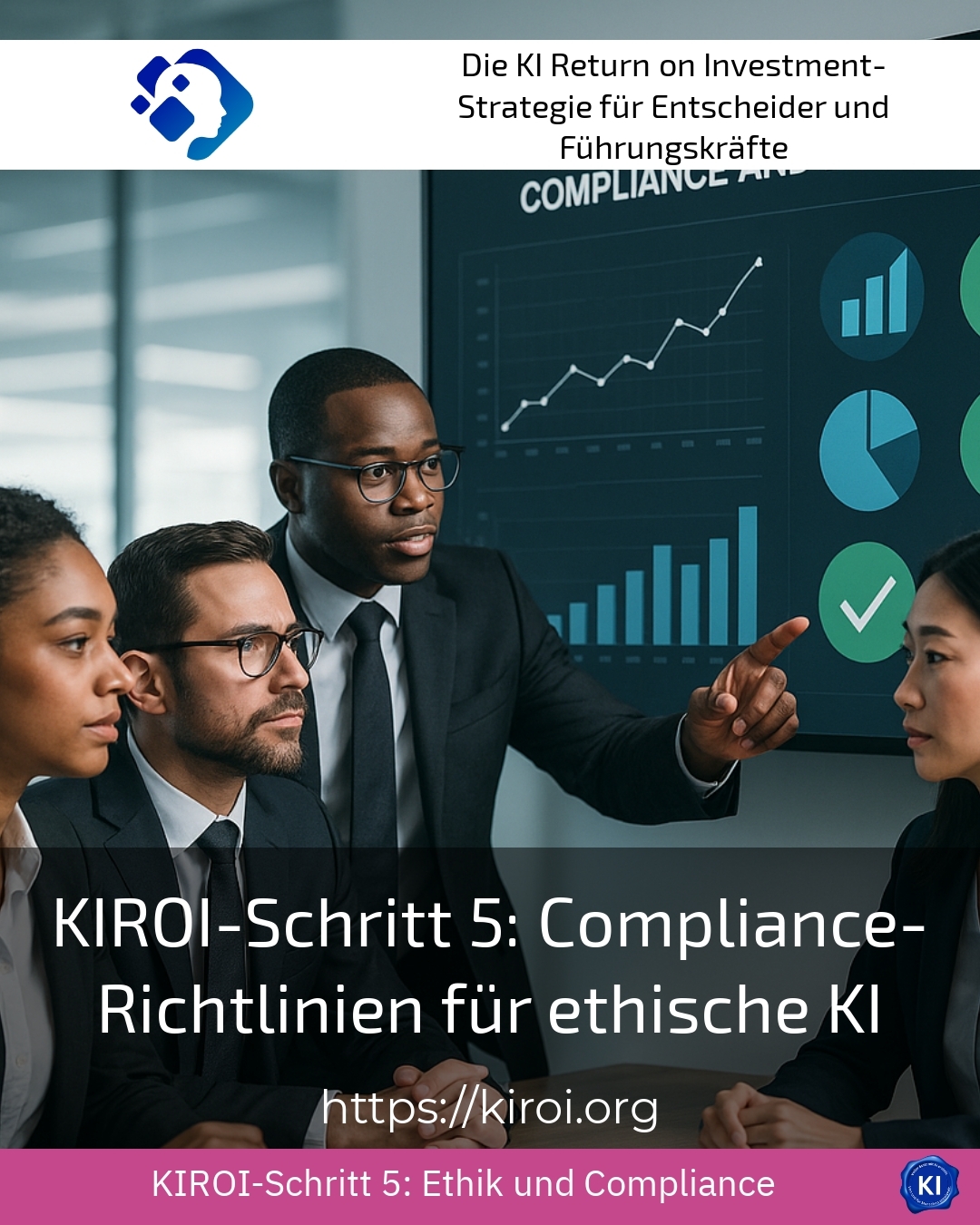Adherence to compliance guidelines is now a central component for companies that want to use innovative technologies responsibly. Especially in the area of ethical AI, compliance guidelines are indispensable for fulfilling legal, ethical and social requirements. They create clarity, protect against risks and provide guidance for employees. The creation and implementation of such regulations is not a one-off act, but a continuous process that is closely linked to the corporate culture.
Why compliance guidelines are important for ethical AI
Compliance guidelines help to make the use of AI systems transparent and traceable. They define which tools are permitted, which data may be used and how decisions must be documented. Without such regulations, there is a risk of legal conflicts, reputational damage and a loss of trust among customers and employees.
Many companies report that they need compliance guidelines in order to safely introduce new technologies. Questions often arise such as: Which AI tools may be used? How is personal data protected? How do we prevent discrimination through automated systems?
An example from the financial sector: a credit institution uses AI systems for risk assessment. Without clear compliance guidelines, hidden discrimination could occur, for example if certain customer groups are systematically disadvantaged. A carefully drafted policy prevents such scenarios and protects the company from liability risks.
Another example from the healthcare sector: A hospital uses AI for diagnostic support. Compliance guidelines are necessary here to ensure that patient data is protected and the systems work transparently. This is the only way to maintain patient trust.
Compliance guidelines are also essential in the area of human resources. If AI tools are used to select applicants, they must be fair and non-discriminatory. A clear regulation protects the company from legal conflicts and ensures fair processes.
Compliance guidelines in everyday practice
What compliance guidelines can look like in practice
A good compliance policy defines the scope of application, specifies roles and responsibilities and provides specific instructions for action. It should be understandable for all employees and be updated regularly.
Example from logistics: A company uses AI to optimise routes. The compliance guideline defines which data is collected, how it is stored and who has access to it. This ensures that no personal data is misused.
Another example from the retail sector: an online shop uses AI for personalised advertising. The compliance guideline regulates how customer data is processed and how transparency towards customers is ensured. This maintains customer trust.
In the education sector: A university uses AI to assess examinations. The compliance guideline specifies how the systems are tested, how results are documented and how errors are corrected. This ensures the credibility of the assessments.
BEST PRACTICE with one customer (name hidden due to NDA contract)
BEST PRACTICE with one customer (name hidden due to NDA contract) and then the example with at least 50 words.
A medium-sized industrial company wanted to introduce AI systems for quality control. The employees were unsure which data could be used and how the results had to be documented. We worked with the company to develop a compliance guideline that covered all relevant aspects. Employees were trained and given clear instructions on how to act. As a result, legal risks were avoided and confidence in the new systems was strengthened.
Compliance guidelines as part of the corporate culture
Compliance guidelines are not only a legal instrument, but also an expression of the corporate culture. They show that the company assumes responsibility and takes ethical standards seriously.
An example from the energy sector: A utility company uses AI to optimise the grid. The compliance guideline defines how the systems are tested, how results are documented and how errors are corrected. This ensures the safety and reliability of the grid.
Another example from the media industry: a publishing house uses AI to produce content. The compliance guideline regulates how content is checked, how copyrights are observed and how transparency towards readers is guaranteed. This maintains the credibility of the content.
In the area of public administration: An authority uses AI to process applications. The compliance guideline defines how the systems are tested, how results are documented and how errors are corrected. This ensures that the administration is fair and transparent.
My analysis
Compliance guidelines are an indispensable component for companies that want to use innovative technologies responsibly. They create clarity, protect against risks and provide guidance for employees. The creation and implementation of such policies is a continuous process that is closely linked to the corporate culture. Companies that take compliance guidelines seriously strengthen their trust among customers and employees and protect themselves from legal conflicts.
Further links from the text above:
AI and compliance - ki-kanzlei.de
AI compliance: important legal aspects at a glance
FAQs on AI compliance: what companies need to know
Implementation guide for the AI Regulation
AI guideline in the company - Guideline 2025 + template
AI compliance - guidelines and training for the safe use of AI tools
Guidelines for the use of artificial intelligence in the federal administration
For more information and if you have any questions, please contact Contact us or read more blog posts on the topic Artificial intelligence here.















